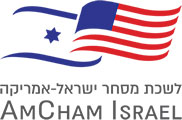by Tamir Agmon* and Ido Kallir**
August 4, 2009
Abstract
In the knowledge-base world of today ideas (intellectual assets) are an important driver for growth and development. It takes long time to make ideas into actual cash flows. Only if entrepreneurs can sell their ideas for future goods, services and processes in the capital market today they stand a chance to realize the potential of their innovative ideas tomorrow. The venture capital industry provides an excellent example for an industry that is based on the ability to bring together ideas and high risk capital in a process that generates value. Of particular interest is the case where the entrepreneurs reside in one country and the investors reside in another country. We show in this paper that in this case there are two benefits; the benefits to the entrepreneurs and the investors, and the benefits to the country where the investment takes place. The first benefit depends on the success of the young innovative technology firms (start-ups) set up by the entrepreneurs and the venture capital funds. The second benefit depends on the total flow of high-risk capital from the country of the investors to the country where the investment takes place. The two main components of the second, macro benefit are the employment of local high skilled and other workers and the tax that they pay. Israel is a good case in point for a country that benefited substantially from the import of high-risk capital primarily from the US via venture capital fund. We use Israeli data to estimate the total benefit to the Israeli economy from the investment by venture capital funds funded by foreign high-risk capital. The main result is that the benefits to the Israeli economy from the wage bill generated by the investment and the direct contribution of the workers exceeds by much the benefits to the economy from the successful start-ups, (exits). For the complete text, contact the Chambe

